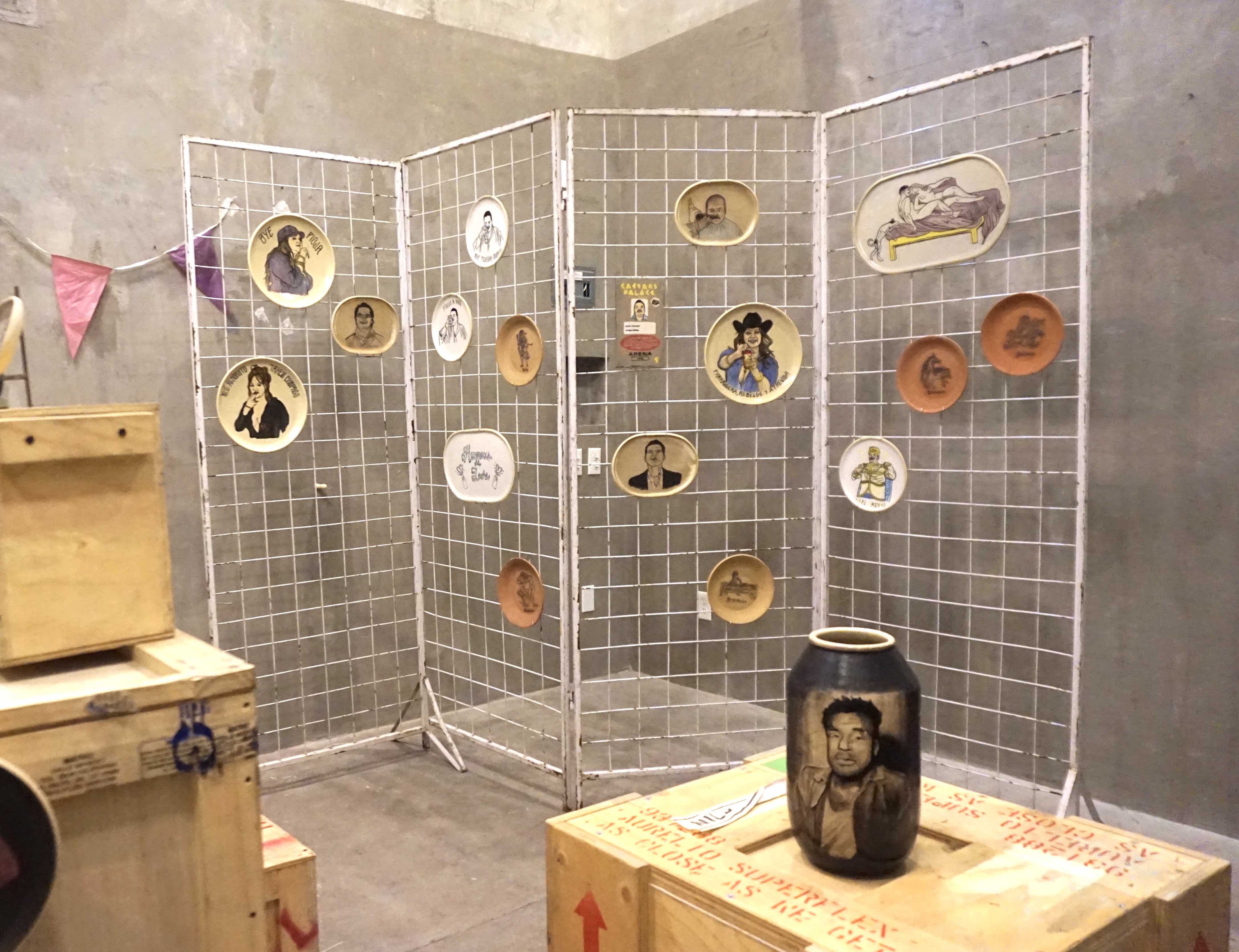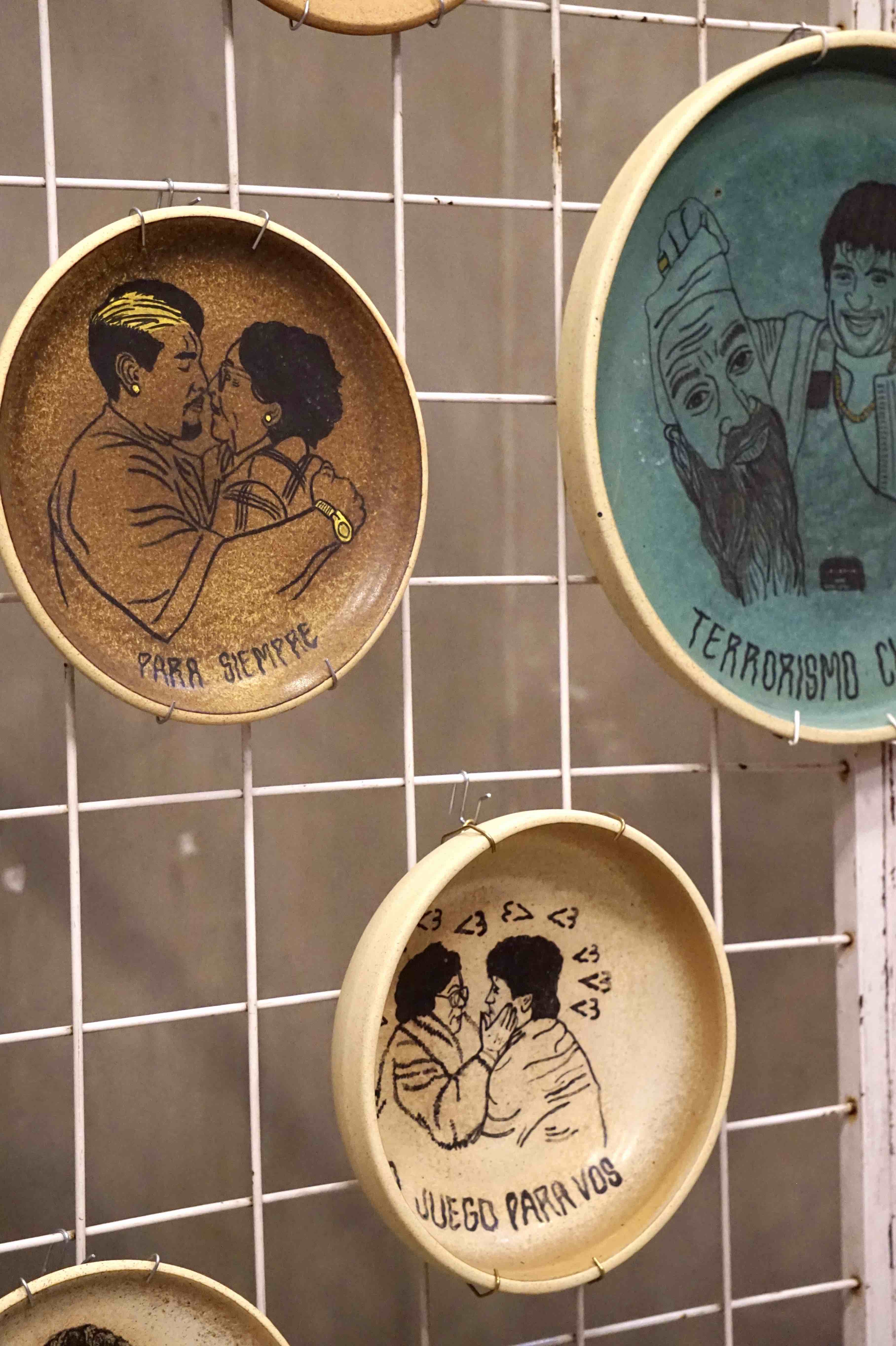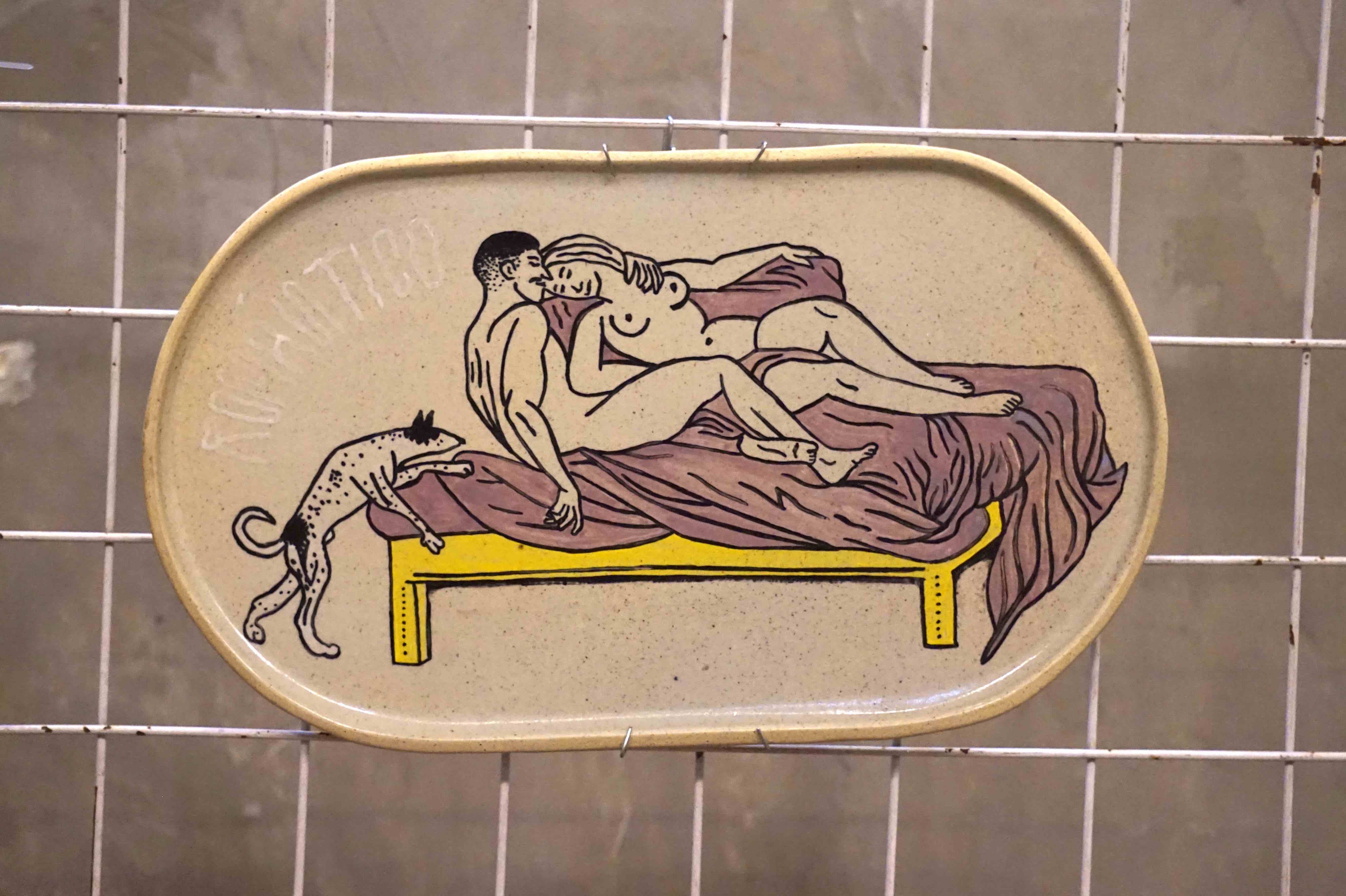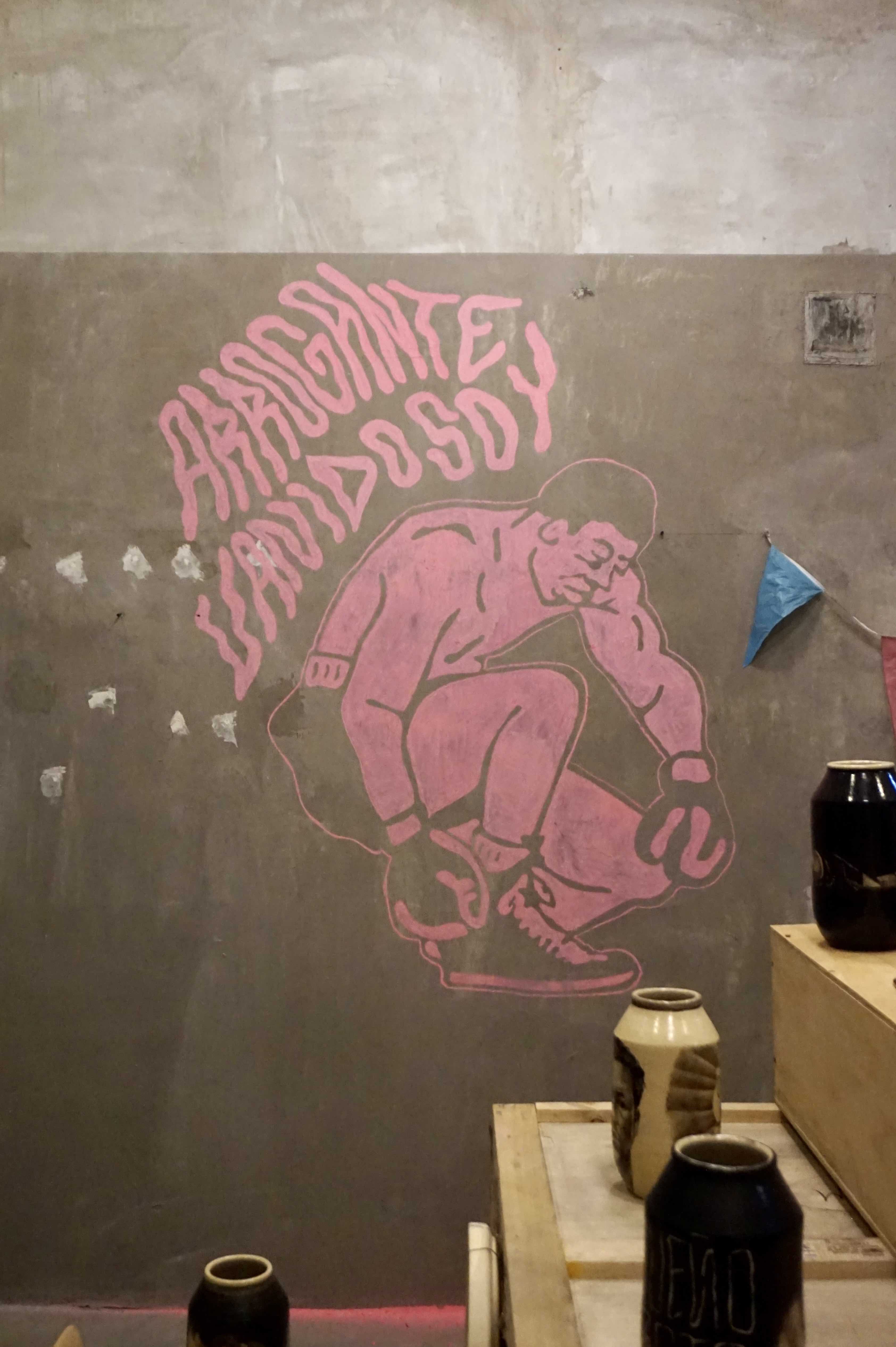
Review
Match by Match. On 'Paradero' by Manuel García
by Alejandra Arreola
At Armen Daguer
Reading time
5 min
What we have seen last year, match by match, has been a blow against cynicism, against pessimism, against the feeling that the big ones are always going to eat the small ones.
— Santiago Roncagliolo, on Atlético de Madrid, Champions League, 2014.
To delve into the work of Manuel García, it is necessary to know that we are dealing with a colchonero artist –a supporter of the Atlético de Madrid soccer club– as well as an atlista –a supporter of the Atlas team from Guadalajara– since he was a child. Fans of both follow their teams religiously, no matter the matchs' outcome. Being an atlista is a condition that is forged from constant failure and imprints in its supporters a resilient capacity for endurance, faith and persistence.
I myself grew up in an atlista family and the members of the fan club, known as Barra 51, used to meet outside my house in the nineties. If Atlas won, our father would invite our family to dinner, yet if they lost, the drive home from the Jalisco Stadium was pure silence and long faces.
We atlistas know that the sound of the little organ played live during the games is a melody that makes you smile. On the street outside my parents' house, phrases were painted in white on very long red and black flags; phrases that remained on view over the asphalt for a few months. Today, Manuel García raises flags made by himself with phrases linked to the labor exploitation experienced by workers or assistants who collaborate in the chain of mass production of decorative objects, sometimes called contemporary art.
Manuel García presents the exhibition Paradero, curated by Rubén Méndez, at the Armen Daguer gallery. It is made up of ceramic platters and vases intervened with drawings and phrases incorporating famous people, ranchera singers and sportsmen, all of which aesthetically evoke local street posters. The sentences chosen to accompany the drawings make reference television and social media culture that went viral.

García avoids pretentious statements, instead, his work emerges from the popular, therefore standing out among the young local artistic production where some thematic axes are developed repetitively, such as historical revision or "serious" research that are usually soporific. His practice also distinguishes itself from projects that claim to be built from relational practices emerging from "affects", "spaces of resistance" or " dissidences"; all sacred experiences that by being added obscenely to so many discourses have been emptied of meaning.
Boxing, soccer and sexual enjoyment are recurring themes in Manuel's drawing production, together with the phrases he includes in his pieces –such as the forceful "We are so different"– offer a wide range of readings. Within this playing field, which is a broken society where media personalities and our neighbors are dedicated to launching messages of hate, one keeps on reflecting upon the phrase proposed by the artist: "Are we actually so different?”
Sex has always been and will always be an experience that allows us to merge, recognize, enjoy and find each other. Even if we come from distinct places. Sexual satisfaction is the flag of fair play, the game of enjoyment: a truce of simple pleasure within the reach of all bodies.

Manuel declares himself a romantic and, in the exhibition, he displays a sweet drawing of a domestic sex scene in which his dog Cecilio is deliberately presented as a spectator and nuclear member of an interspecies loving pack. Perhaps, being a romantic is the only way of survival for some.
The phrase "Arrogant and Vain" lends an atmosphere of bewilderment to the exhibition room; no one wants to self-publicize in a negative way. Therefore, we must recognize that there are many types of vanity and it seems that Manuel is referring to the one that captivated Robert Walser: one based on a tender display of the minimal and the fleeting. Vanity similar to that experienced by people in love, who are nourished by a force that goes through walls.

A sense of humor also permeates the images that make up the exhibition and were created in Santiago Padilla's ceramic workshop. Not so young and not so apprentice-like, Manuel persists and works in front of the drawing board like Jack Dempsey and Gene Tunney in the extended fight on the boxing ring during 1926-1927, at last creating, match by match, a body of work with a style of his own.
His project Obreros de la cultura F.C. provokes noise in the city of Guadalajara by highlighting, without artifice, the fact that big studios of artistic production reproduce the same dynamics of exploitation as any other shitty companies. It takes courage and determination to create projects of this nature in a hyper-conservative environment, in which most cultural workers are submissively declaring that working environments are healthy and mutually respectful: a wonderful adventure.
I had the joy of seeing Manuel and my father exchange their drawings, which included the red and black line-up of the fan club Barra 51, as well as Maradona, Socrates –the philosopher of the ball–, and caricatures in which Manuel appears as a cowboy, on horseback and wearing a hat. I also had the honor of having Manuel sleep in the armchair, next to my dying father's bed. An aesthetic accompaniment that not just any son-in-law commits to. I am referring to the kind of loyalty that can occur between atlistas.
Paradero, by Manuel Garcia, is on view at the Armen Daguer Gallery in Guadalajara through June 28, 2023.
Published on June 14 2023